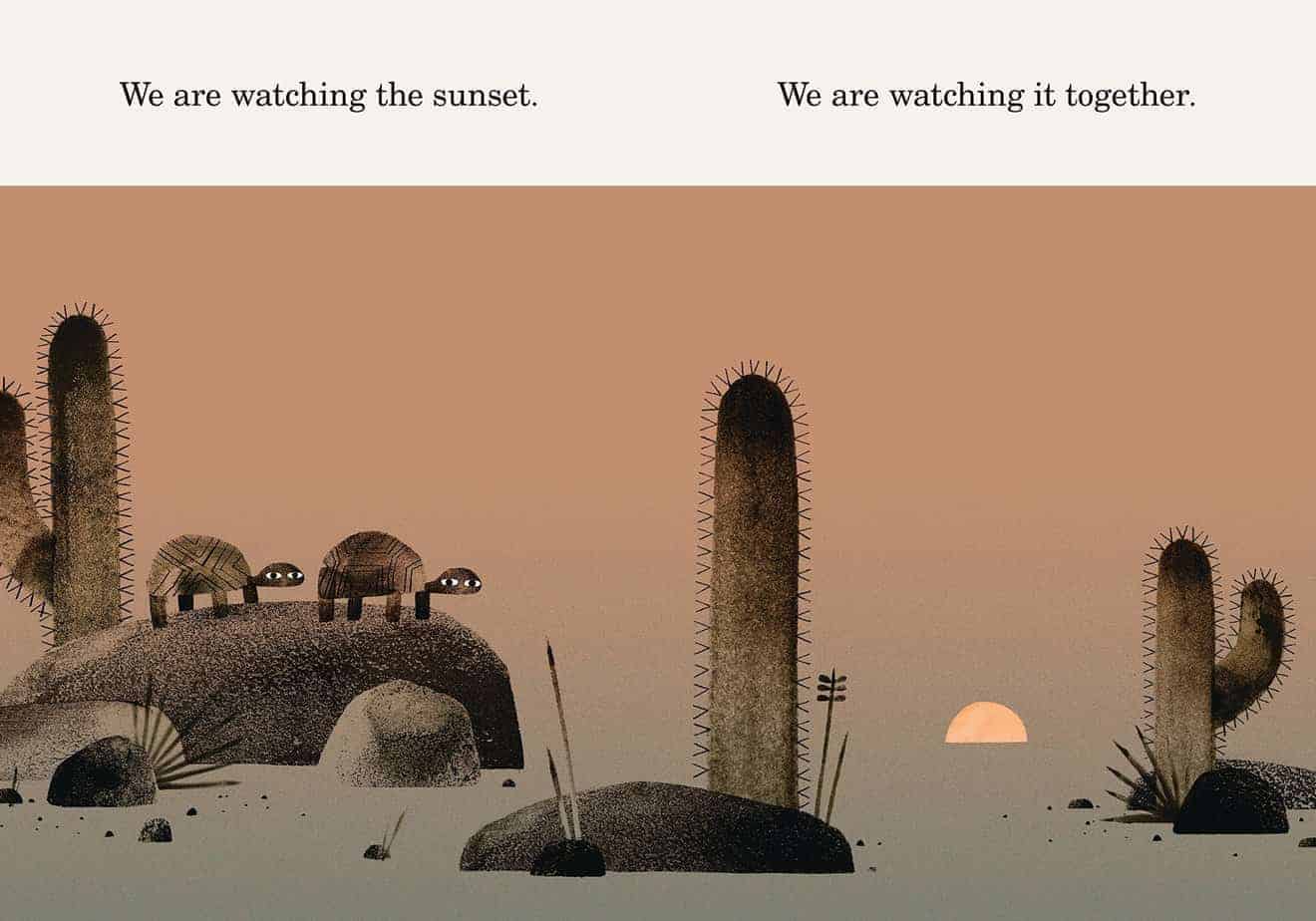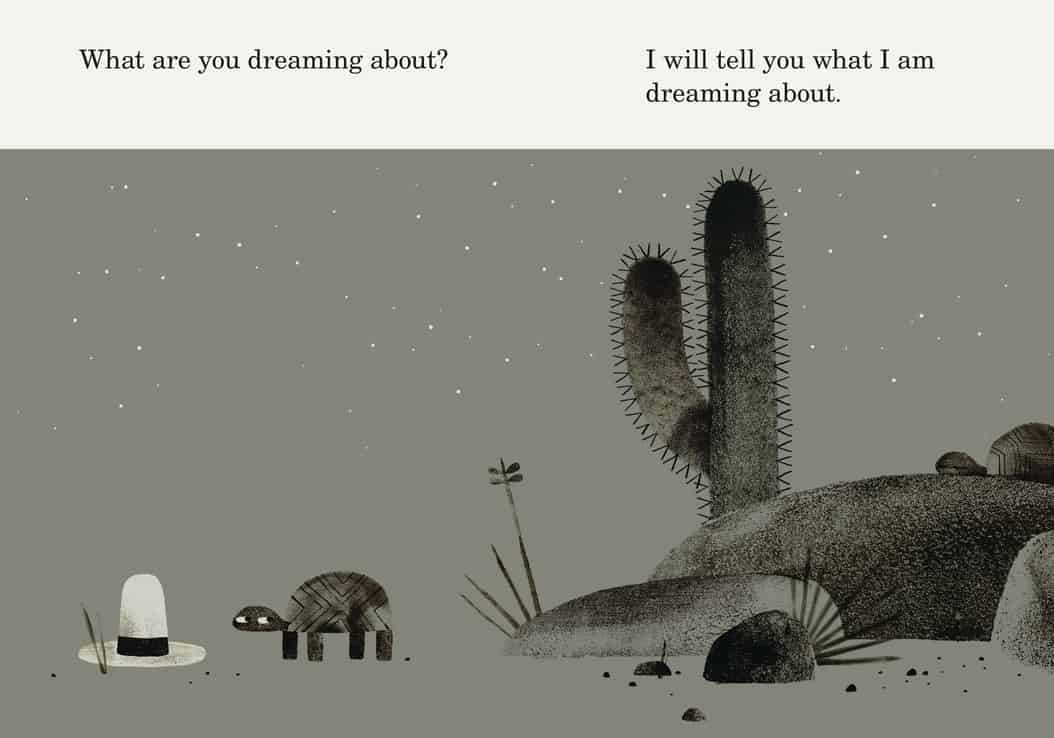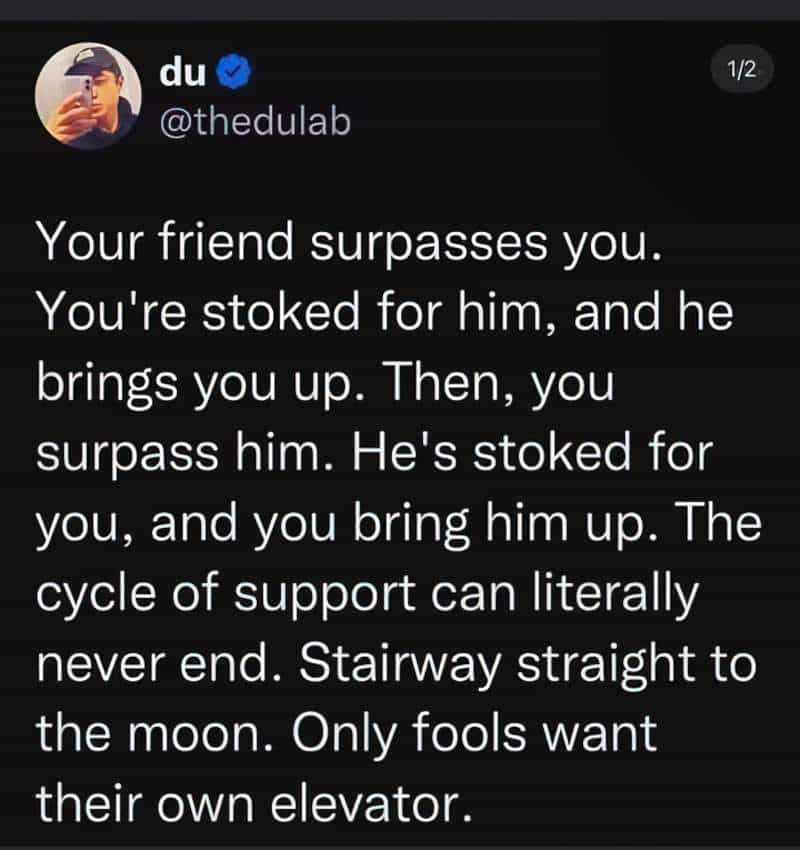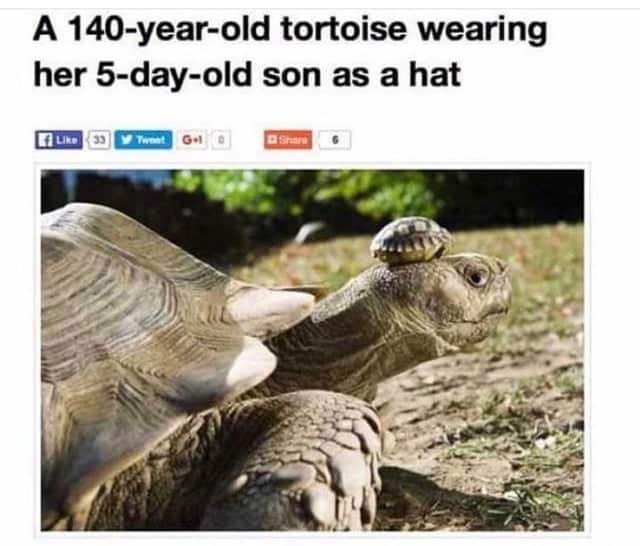Earlier this month I wrote a post on Teaching Kids How To Structure A Story. Yesterday I looked closely at Mac Barnett and Jon Klassen’s Sam and Dave Dig A Hole. Today’s picture book is We Found A Hat, which is similar to Sam and Dave Dig A Hole. In both stories, a dream sequence flings the two characters into space, bringing the story to an end.
We Found A Hat is the third of Jon Klassen’s Hat Trilogy of picture books — each has a different cast of characters, but all feature a hat in some way. In all of these books, the hat is a highly desirable object. The desirability of the hat is taken to an absurd degree, and I wonder if it’s because owning a hat makes these talking animals feel more sophisticated (more human).
In We Found A Hat, Klassen makes full use of classic ‘Three Act Structure’, dividing his very short book into three parts. Dividing a picture book into parts is funny in itself, because the partitions originally existed so the audience could take a break. These days, writers often make use of three act structure when plotting a story. (I prefer the 7-part structure, as you’ll see below.)
The others in the hat series are This Is Not My Hat and I Want My Hat Back. All are equally great, though We Found A Hat is more about friendship and less violent.
In each book, the picture-text dynamic implies that the hat’s rightful owner does violence to the thief at the end. This tale is both more ambiguous and less action-oriented.
Kirkus review
STORY STRUCTURE OF WE FOUND A HAT
WHO IS THE MAIN CHARACTER?
Like Sam and Dave, the two tortoises* in We Found A Hat are pretty much the same. Klassen goes further: they are in fact identical, which is part of the gag. (If the hat looks good on one of them, it’ll look good on the other.)
*I have no idea if they’re turtles or tortoises. But they live in the desert. I’m calling them tortoises.
What is wrong with the tortoises?
In this minimalist, unchanging environment, the appearance of a dropped cowboy hat is a big deal. A bigger deal than it should be. They’ve both going to have to get over this hat. Klassen withholds this information until later, but it will be revealed that one tortoise has more trouble than the other suppressing his desires.
This Rogue Tortoise becomes The Main Character.
WHAT DO THEY WANT?
We Found A Hat is a great example of a story in which two opponents want the same thing, when only one of them can have it. (Because there is only one to be had.)
Klassen puts an ironic distance between the pictures and the text. To us, the tortoises do not look good in the hat.
Klassen’s artwork, spare and sly, tells a different story. The hat does not look good. It looks silly, as if the turtle’s head were stuck in a plastic bucket.
Publishers Weekly review
This endears me to the tortoises. It’s super cute that they think they look good in the hat.
OPPONENT/MONSTER/BADDIE/ENEMY/FRENEMY
Since both tortoises want the one hat, they are each other’s enemy.
WHAT’S THE PLAN?
At first the tortoises do the right thing. They leave the hat where they found it, because if one of them takes it, the other will be jealous. This will lead to a breakdown of their relationship.
Next, they try to not to think about the hat. They admire the sunset. (They presumably do this every evening, because there’s not much in the landscape. They probably have the same conversation, too.)

Eventually, in Part Two, one tortoise Breaks Bad and we see him making plans to retrieve the hat while the other is asleep. In true comedic style, although the other tortoise is ‘asleep’, s/he is still able to talk coherently, about being asleep. This is an example of irony.
BIG BIG STRUGGLE

The Rogue Tortoise’s big big struggle is an entirely psychological one. In Jon Klassen picture books it’s vital to read the eyes. The eyes carry most of the information about character. When Rogue Tortoise reaches the hat, s/he feels guilty. The other tortoise has said that in her dream they are both wearing the hat. This makes Rogue Tortoise feel super guilty and he changes his mind about taking it for himself.
Many of the readers of We Found A Hat will have already read the earlier hat books. I feel like Jon Klassen deliberately subverts expectations by providing us with a gentle ending. (You expected violence, didn’t you?)
Readers who think they know what’s coming will be wrong: the conclusion doesn’t involve sharing, peacemaking, or violence. Instead, Klassen considers the instant at which a decision to act can break either way, depending on who’s tempted and whether anyone else is watching. In contrast to the first two books, which relied on a certain conspiratorial menace, this one ends with a moment of grace and a sky full of stars.
Publishers weekly review
WHAT DOES THE CHARACTER LEARN?
Rogue Tortoise learns that he can overcome strong desires if he really wants to.
This change of heart is symbolised by the dream he has, which matches his friend’s dream — they are both dreaming of a scenario in which they each have their own identical hat. They fly into the starry, desert sky, newly free of pesky desires.
All three stories are about justice. It’s just that justice doesn’t always mean the same thing.
Publishers weekly review

HOW WILL LIFE BE DIFFERENT FROM NOW ON?
It won’t.
Which is the point.
At least, the circumstances are the same as ever. No one has a fancy new hat.
BUT! Rogue Tortoise has wrestled internally with a strong desire and overcome that desire in favour of maintaining a good relationship. So I guess that relationship is slightly stronger than before.

